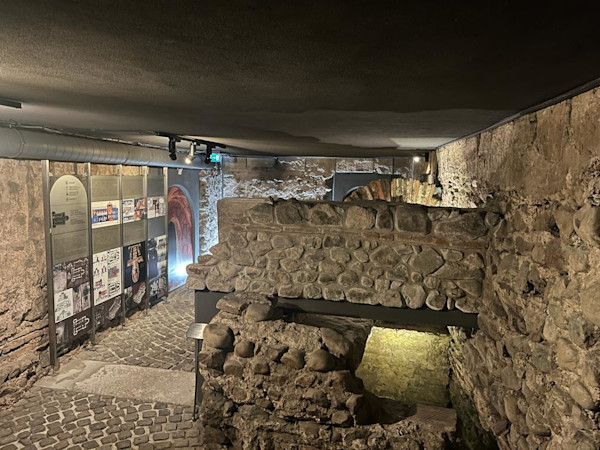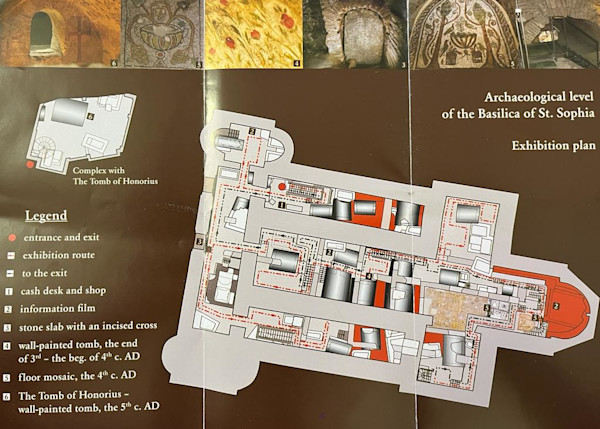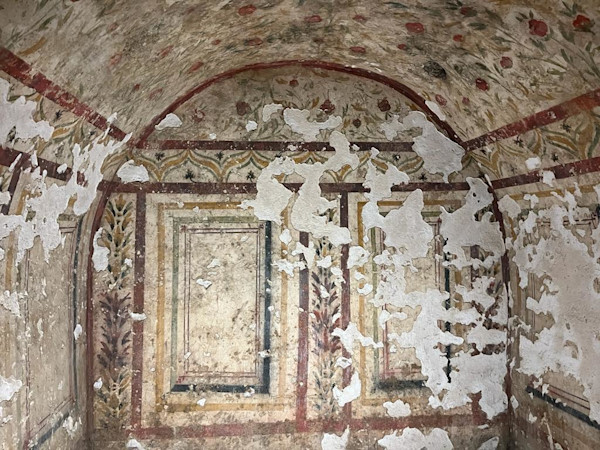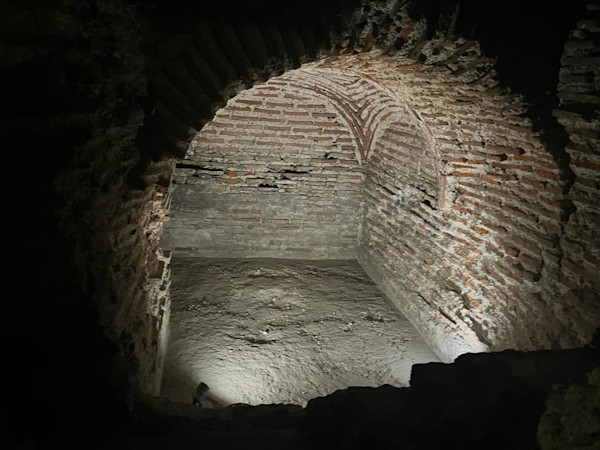The Sofia Underground: Archaeological Level of the Basilica of St. Sophia
20 Oct 2023 by Amby





One of the reasons Drew and I wanted to visit Bulgaria in general was the archaeology and history of the country. Sofia certainly did not disappoint in that regard, and the Basilica of St. Sophia provided a fascinating look into the early Christian life of the city.
St. Sophia is one of the oldest churches in Sofia, and the city is actually named after this church. On the outside, the church does not look that spectacular, especially compared to some of the other ornate churches nearby like the St. Alexander Nevsky Cathedral.
However, St. Sophia really shines for its large underground museum and archaeology site, which was one of the coolest activities Drew and I did in Sofia. The church was built on top of a Roman necropolis, and has itself been destroyed and rebuilt five times over the centuries, the most recent being in the 500s, a contemporary of the more famous Hagia Sofia in Istanbul.

Getting There:
Drew and I spent the early afternoon visiting multiple churches and museums in Sofia, starting at St. Alexander Nevsky Cathedral.
St. Sophia is a short walk away, and there are a lot of interesting shops, parks, and cafes nearby, so this is a good central location in the city.

We got to St. Sophia and had a look around. Photography is not allowed without paying a small fee, which we declined.
We went downstairs (there are plenty of signs showing where to go), and paid 6 BGN to enter the “archeological level” of the church.

The Exhibits:
Drew and I were surprised by how extensive the crypts were—the complex was much larger than expected.
We were also impressed by how old and how intricate these crypts were, including ornate painting and mosaics from earlier churches built on the site. Tombs range in age from the 3rd to 5th century AD.

On a level even lower than the archaeological floor is the “Complex with the Tomb of Honorius,” a 5th century tomb featuring the name of the deceased—the only one of its kind in Bulgaria.
Exhibits explained how the style of tombs changed over time and the symbolism behind the artwork. Signage was in Bulgarian and English.

Conclusion:
It took us about a half hour to get through the church and crypts. We thought the price was well worth the experience and it’s an easy activity to add into your Sofia itinerary that increases your appreciation for the history and religious character of the city.
Five snacks!









Write a comment